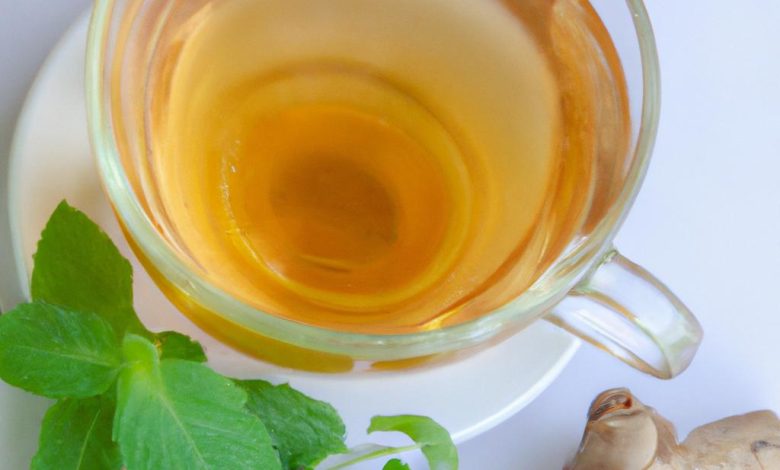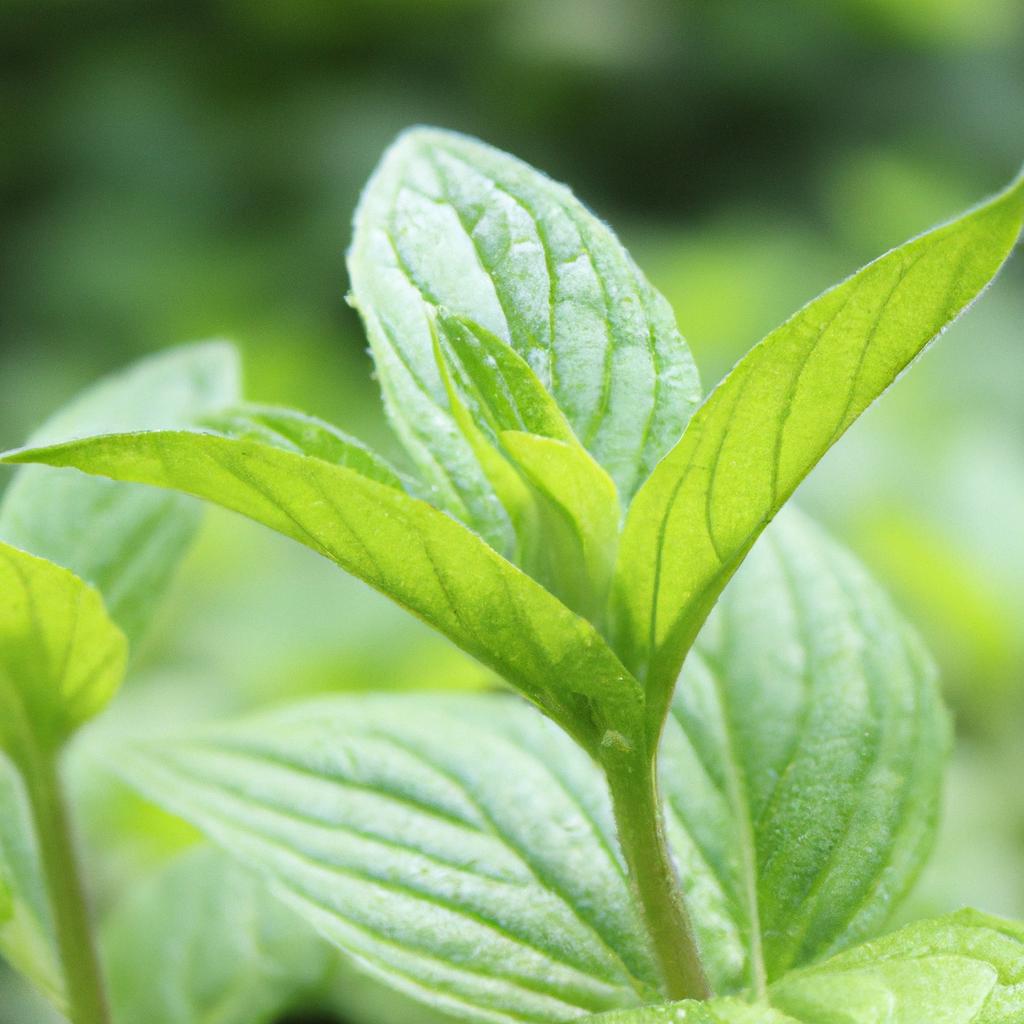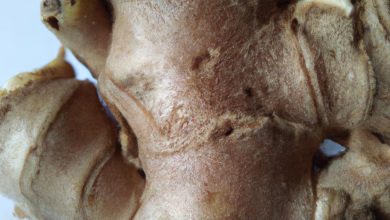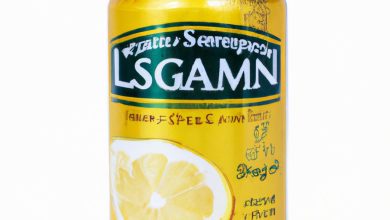What is a Ginger Mint? A Guide to the Benefits and Uses of this Aromatic Herb

Ginger mint, also known as Mentha x gracilis, is a unique blend of two popular herbs – ginger and mint. This aromatic herb is known for its refreshing scent, subtle spicy taste, and numerous health benefits. In this article, gingerfacts.com will delve into the origins of ginger mint, its health benefits, culinary and personal care uses, and how to grow and harvest it.
Definition of Ginger Mint

Ginger mint is a perennial herb that belongs to the Lamiaceae family. It is a hybrid of two herbs, Mentha arvensis (wild mint) and Mentha spicata (spearmint), and is commonly found in Asian and European countries. Ginger mint leaves are green, lance-shaped, and have serrated edges, similar to other mint varieties.
Brief history and origin

Ginger mint’s origin dates back to ancient times, where it was used for medicinal purposes by Egyptians, Greeks, and Romans. The herb was used to treat various ailments such as digestive disorders, nausea, and headaches. Ginger mint’s popularity grew in the Middle Ages, where it was used to flavor food, beverages, and candies.
Today, ginger mint is widely cultivated and used in various culinary and personal care products worldwide. Its unique flavor and aroma make it a popular ingredient in teas, cocktails, and skincare products.
Now that we’ve covered the basics, let’s dive into the health benefits of ginger mint.
Health Benefits of Ginger Mint

Ginger mint is more than just a refreshing herb; it also offers numerous health benefits. Here are some of the health benefits of ginger mint:
Anti-inflammatory properties
Ginger mint has anti-inflammatory properties that can help reduce inflammation in the body. The herb contains compounds like rosmarinic acid, caffeic acid, and flavonoids that can help reduce inflammation and pain.
Digestive aid
Ginger mint is an excellent digestive aid that can help reduce digestive issues like bloating, gas, and indigestion. The herb contains compounds that can help relax the muscles in the digestive tract, reducing the symptoms of digestive issues.
Immune system booster
Ginger mint is rich in antioxidants and other compounds that can help boost the immune system. The herb’s anti-inflammatory properties can also help reduce inflammation in the body, which can help improve overall immune function.
Respiratory health
Ginger mint can also help improve respiratory health. The herb’s anti-inflammatory properties can help reduce inflammation in the respiratory system, reducing symptoms like coughs and congestion.
Pain relief
Ginger mint is also known for its pain-relieving properties. The herb’s anti-inflammatory compounds can help reduce pain and inflammation, making it an effective natural pain reliever.
In the next section, we’ll explore the culinary uses of ginger mint.
Culinary Uses of Ginger Mint
Ginger mint’s unique blend of flavors makes it a versatile ingredient in various culinary dishes and beverages. Here are some of the popular culinary uses of ginger mint:
Infusions and Teas
Ginger mint tea is a popular beverage that is made by steeping ginger mint leaves in hot water. The tea has a refreshing taste and aroma that helps improve digestion, reduce stress, and boost immunity. Ginger mint leaves can also be added to other tea blends such as green tea, black tea, and herbal tea to enhance their flavor and health benefits.
Culinary Dishes
Ginger mint leaves can be used to add flavor and aroma to various culinary dishes such as salads, soups, stews, and curries. The herb’s subtle spicy taste complements well with other ingredients such as vegetables, fruits, and meats. Ginger mint leaves can also be used to flavor sauces, marinades, and dressings.
Cocktails and Mocktails
Ginger mint is a popular ingredient in cocktails and mocktails due to its unique flavor and aroma. The herb’s subtle spicy taste and refreshing scent make it an excellent addition to various drinks such as mojitos, margaritas, and lemonades. Ginger mint leaves can also be used to make simple syrups and garnishes for cocktails.
In the next section, we’ll explore the beauty and personal care benefits of ginger mint.
Beauty and Personal Care Uses of Ginger Mint
Ginger mint’s unique properties make it a popular ingredient in various personal care products. From skincare to haircare, this herb has several benefits that can work wonders for your beauty routine. In this section, we’ll explore the different uses of ginger mint in personal care.
Skin care benefits
Ginger mint is rich in antioxidants, which can help to protect your skin from environmental stressors like pollution and UV rays. It also has anti-inflammatory properties that can soothe irritated skin and reduce redness. Ginger mint’s natural astringent properties can help to tighten pores and reduce the appearance of fine lines and wrinkles.
One way to incorporate ginger mint into your skincare routine is by using it in a DIY face mask. Simply mix ginger mint leaves with honey and apply it to your face for 15-20 minutes. Rinse off with warm water for soft, glowing skin.
Hair care benefits
Ginger mint is also beneficial for hair care. It has antiseptic properties that can help to cleanse and purify the scalp, reducing dandruff and other scalp conditions. Ginger mint’s stimulating properties can also promote hair growth and strengthen hair follicles.
To use ginger mint in your hair care routine, try making a DIY hair mask. Mix ginger mint leaves with coconut oil and massage it into your scalp. Leave on for 30 minutes before rinsing off with warm water for healthy, shiny hair.
Aromatherapy
Ginger mint’s refreshing scent makes it a popular ingredient in aromatherapy. It has a calming effect on the mind and can help to reduce stress and anxiety. Ginger mint essential oil can be diffused or added to a warm bath for a relaxing and rejuvenating experience.
Growing and Harvesting Ginger Mint
If you’re interested in growing your ginger mint, you’ll be pleased to know that it’s a relatively easy herb to grow. Here are some tips for cultivating and harvesting ginger mint.
Ideal Growing Conditions
Ginger mint thrives in moist soil with good drainage and partial shade. The ideal temperature range for growing ginger mint is between 60-75°F (15-24°C). However, the herb can tolerate a wide range of temperatures, making it a hardy plant. Ginger mint can be grown in pots or directly in the ground, making it a versatile herb to grow.
When planting ginger mint, ensure that the soil is rich in organic matter and has a pH level of 6.0-7.0. Water the plant regularly and avoid overwatering, as this can cause root rot. Ginger mint is a fast-growing plant, so it’s important to prune it regularly to encourage new growth.
Tips for Harvesting and Preserving
Ginger mint leaves can be harvested as soon as the plant is established, which usually takes around 3-4 weeks. To harvest the leaves, simply pinch off the top leaves with your fingers or use scissors to cut them off. It’s best to harvest ginger mint in the morning when the leaves are at their freshest.
To preserve ginger mint, you can dry the leaves and store them in an airtight container. Alternatively, you can freeze the leaves in ice cube trays with water or oil and use them as needed. Ginger mint leaves can also be used fresh in teas, salads, and other culinary dishes.
Overall, ginger mint is a low-maintenance herb that’s easy to grow and harvest. With the right growing conditions and proper care, you can enjoy the numerous health benefits and culinary uses of this aromatic herb.
Conclusion
In conclusion, ginger mint is a versatile herb that offers numerous health benefits and a unique flavor profile. It is an excellent addition to your diet, personal care routine, and herb garden.
We’ve learned that ginger mint has anti-inflammatory properties, aids in digestion, boosts the immune system, and relieves pain. It can be used in various culinary dishes, infusions, and cocktails, making it a popular ingredient in the food and beverage industry. Additionally, ginger mint is beneficial for skin and hair care, providing a refreshing and soothing aroma.
Growing and harvesting ginger mint is relatively easy, and it thrives in moist and well-drained soil. It is a low maintenance plant that can be grown indoors or outdoors, making it an ideal herb for beginners.
At gingerfacts.com, we are committed to providing accurate and reliable information about ginger and its related herbs. We hope this guide has helped you understand the benefits and uses of ginger mint. Try incorporating ginger mint into your daily routine and experience the refreshing taste and health benefits firsthand.
Conclusion: So above is the What is a Ginger Mint? A Guide to the Benefits and Uses of this Aromatic Herb article. Hopefully with this article you can help you in life, always follow and read our good articles on the website: gingerfacts.com




